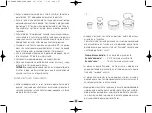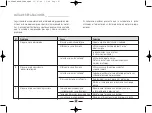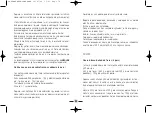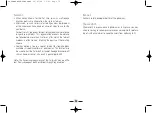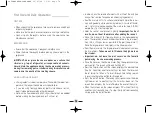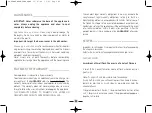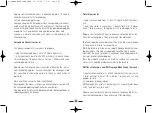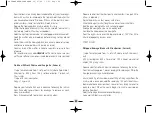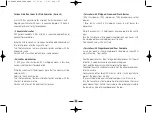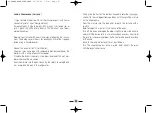
• When the appliance is off, the screen flashes '00'.
• Unplug the appliance after each use.
• Allow the appliance to cool for a few minutes before removing
the cheese pots.
IMPORTANT
: condensation may form inside the appliance cover.
When removing the cover, take care not to let any of the accumu-
lated water drip into the cheese mixture.
DRAINING THE FROMAGE BLANC
• Carefully remove the cheese pots from the cheese maker. Next,
lift and turn each strainer in its pot until the side tabs slip into
the notches. The wavelike shape makes this easy.
• Place the pots and strainers in the 'high' drainage position in
your refrigerator.
Refer to the following table to determine approximate draina-
ge time depending on the desired use: whipped fromage
blanc, 'moist' faisselle (i.e., to be served as is) or 'dry' faisselle.
Whipped fromage blanc
............Drain 2 - 4 hours
'Moist' faisselle
............................Drain 5 - 10 hours
'Dry' faisselle
................................Drain 12 - 24 hours
• For 'moister' cheese, leave the whey in the pot so that it stays in
contact with the fromage blanc to prevent it from 'drying out'
too much.
• Of course, if you prefer dryer cheese, simply keep removing the
whey as it accumulates. To speed up the drainage process, slice
the faisselle carefully in a few places.
• To enjoy the resulting faisselle, you may simply turn it out and
serve, or you may whip with a whisk or hand blender to make
creamy whipped fromage blanc. Take care not to whip the
cheese while it is still in the strainer as this would make it drip
out through the holes.
• Add just a small amount of salt if you like your cheese salty. Note
that adding salt causes the cheese to produce more whey.
• You may also want to leave your faisselle longer to drain to pro-
duce 'dry' cheese.
MAKING 'DRY' CHEESE FROM FROMAGE BLANC
Fromage blanc is the starting point for most cheeses and requires
only a few extra steps to create dryer cheese. Here are some sug-
gestions, keeping in mind that the flavour and texture of your
cheese may vary widely depending on the time of year, type of
milk, amount of salt, temperature and placement of the cheese
maker.
77
- 1 -
LA FROMAGERE:LAGRANGE 22/07/09 15:41 Page 79

